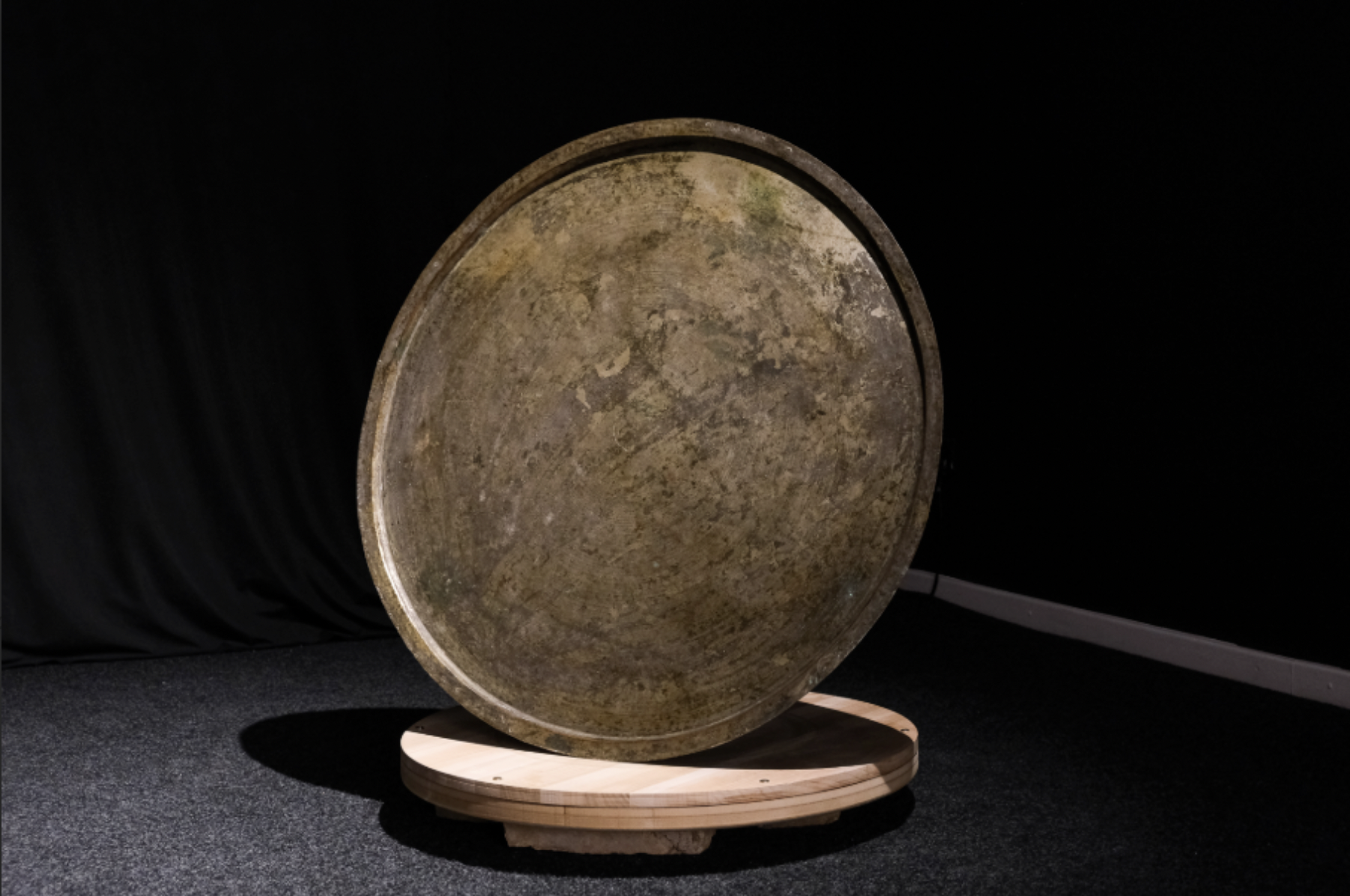Lala Rašćić

POČIMALJA – she who starts the song explores the acoustic properties of the tepsija as an idiophone—a musical instrument that produces sound through the vibration of its own material, without relying on strings, membranes, or external resonators. It also examines the acoustic phenomenon of voice echo singing into the pan, as observed by ethnomusicologist Franz Födermayr and acoustic scientist Werner A. Deutsch.Raščić’s project revisits Födermayr and Deutsch’s 1977 experiment, initially conducted in a sound studio. By recreating this study within a gallery setting, Počimalja emphasizes the formal and aesthetic dimensions of tepsijanje while also considering its socio-anthropological significance. Unlike the original test, which relied solely on white noise, this automated disc mimics the spinning motion of the pan. This creates a tremolo effect - a trembling or oscillating sound- palpable in the space. The interplay between the movement and stillness of the disc underscores the emergence or absence of these acoustic effects.
The installation for the Gjon Mili biennale features parts of the larger installation and includes a portfolio of prints that complement the project. The prints are based on the artist’s research and historical images, offering a visual dimension to the auditory experience and are shown in context with illustrations from a 1970 book, titled Folk Traditions in Yugoslavia – Ten Tours. Citing political and cultural sociologist Ana Dević, Raščić reminds us that, despite being deemed “folkloric”, tepsijanje involves a series of “protofeminist” gestures, ones that we are called upon to emulate, disseminate, and ultimately further subvert.